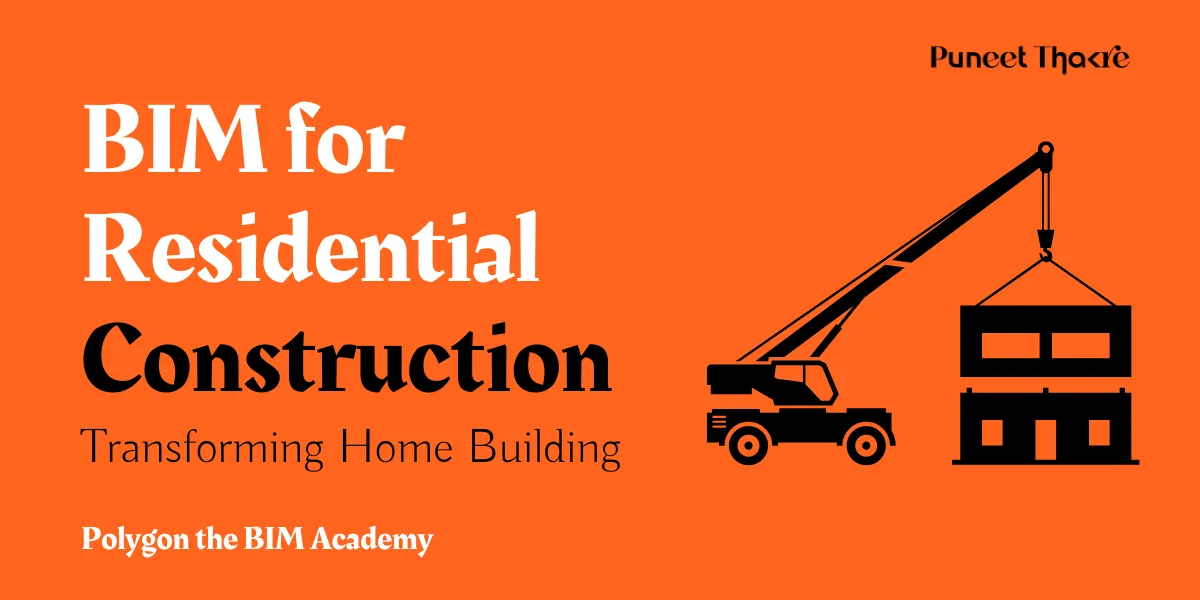#BIM for Residential Construction
The world of residential construction is experiencing a significant transformation, thanks to the emergence and increasing adoption of Building Information Modeling (BIM). This innovative approach not only streamlines the design and construction process but also enhances collaboration among various stakeholders, ensuring a more efficient, cost-effective, and tailored outcome for every residential project. Let’s dive into how BIM is revolutionizing the realm of home building, from the conceptual phase right through to project delivery.
What is BIM and How Does It Apply to Residential Construction?
Understanding the Basics of Building Information Modeling (BIM)
At its core, Building Information Modeling (BIM) represents a holistic approach to the design, construction, and management of building projects. BIM transcends mere 3D modeling; it's a process that provides architects, engineers, and contractors a comprehensive digital representation of every aspect of a building's design, performance, and maintenance. This paradigm shift enables stakeholders to visualize the full scope of a residential building project in unparalleled detail before the construction even begins.
The Role of BIM in Modern Residential Projects
As residential architecture projects grow increasingly complex, the role of BIM in ensuring project success cannot be overstated. BIM for residential design allows for an integrated workflow, facilitating better coordination among teams and more informed decision-making through all construction phases. Whether it's remodeling a cozy bungalow or erecting a multi-unit housing complex, BIM for residential projects offers a unified model that everyone from architects to subcontractors can access, modify, and share.
Comparing Traditional Construction Methods to BIM for Home Builders
The transition from traditional construction methods to BIM for home builders marks a significant evolutionary step in the construction industry. Traditionally, building projects relied heavily on two-dimensional drawings and extensive paperwork, often leading to information silos and miscommunication. The adoption of BIM in residential construction, however, streamlines project delivery by offering a 3D model that encompasses not just the geometry of the building but also spatial relationships, geographic information, and quantities and properties of building components. This cohesive approach reduces errors, enhances team collaboration, and can significantly speed up the construction process.
Why Should Residential Developers Embrace BIM?
Advantages of BIM in Design and Construction Efficiency
The advantages of BIM in design and construction are manifold. For starters, it allows for improved accuracy in the planning phase, significantly reducing the need for rework and changes during construction. This accuracy directly impacts the project's timeline and budget, making BIM an invaluable tool for residential developers looking to maximize efficiency and profitability. Moreover, by facilitating a more detailed visualization of the project from the outset, BIM makes it easier to identify potential issues early on, saving time and resources in the long run.
How BIM Enhances Communication Among Construction Teams
BIM's capability to enhance communication among construction teams is one of its key benefits. The shared use of BIM models fosters a collaborative environment where every team member is on the same page, thereby minimizing the risk of miscommunication and errors. This seamless exchange of information is particularly crucial in residential construction projects, where architects, engineers, and builders must work closely to turn the client's vision into reality.
The Impact of BIM on Reducing Construction Costs for Residential Owners
For residential owners, the financial implications of embracing BIM technology are particularly enticing. By streamlining project workflows and reducing the likelihood of costly errors and delays, BIM directly contributes to lower construction costs. Additionally, BIM's predictive analytics can forecast expenses more accurately, enabling residential developers and owners to better allocate their budget throughout the construction project.
Key Features of BIM Software for Residential Design
Choosing the Right BIM Software for Home Builders
Selecting the appropriate BIM software is crucial for maximizing the benefits of BIM for residential construction. The best BIM software tools offer flexibility, user-friendliness, and compatibility with other construction software, ensuring they can be integrated seamlessly into the project's workflow. Besides, they should support detailed 3D modeling and provide robust visualization and simulation capabilities to facilitate informed decision-making throughout the construction process.
Integrating BIM Software with Other Construction Tools
For BIM implementation to be successful, it’s essential to integrate BIM software with other construction tools used by the project team. This integration includes compatibility with project management software, architectural design tools, and structural analysis programs. Such integration ensures that information flows smoothly across different domains, reducing the risk of data silos and enhancing overall project efficiency.
The Importance of 3D Modeling in Residential Design
The 3D modeling capabilities of BIM are a game-changer in residential design and construction. These models offer a comprehensive visual overview of the project, allowing for virtual walkthroughs and the ability to test different design scenarios without the need for physical models or extensive drawings. This not only aids in better decision-making but also enhances the ability to convey complex project details to residential owners and stakeholders in a digestible format.
Implementing BIM in Your Next Residential Construction Project
Steps to Implement BIM for Residential Construction
To effectively implement BIM in a residential construction project, it’s essential to begin with a clear strategy and goals. This includes training team members to use BIM software proficiently, setting up a shared platform for model access and collaboration, and establishing a consistent workflow that integrates BIM into every stage of the design and construction process. Regular review sessions to assess the BIM model's accuracy and relevance are also crucial to ensure that the project stays on track.
Overcoming Challenges in BIM Implementation
While BIM offers numerous benefits, its implementation can come with challenges, particularly for firms that are early adopters of BIM in the residential sector. These challenges may include resistance to change from team members, the initial cost of software and training, and the need to update existing workflows to accommodate BIM processes. Overcoming these obstacles requires a commitment to change management and continuous learning and adaptation.
Case Studies: Successful BIM Implementation in Residential Projects
Numerous case studies demonstrate the successful implementation of BIM in residential construction projects. These success stories often highlight not only the improved efficiency and cost savings but also the ability to achieve higher standards of quality and customization in home building. Through detailed planning, effective collaboration, and strategic use of technology, these projects exemplify how BIM can transform residential construction.
Future of BIM in Residential Construction: What's Next?
Trends in BIM for Residential Design and Construction
The future of BIM in residential design and construction looks promising, with trends indicating a move towards greater integration of BIM with virtual and augmented reality technologies for even more immersive design experiences. Additionally, the use of cloud-based BIM solutions is on the rise, enabling more flexible and accessible project collaboration.
How BIM is Evolving to Meet the Needs of Complex Projects
As projects become more complex and clients demand more customized solutions, BIM is continuously evolving to meet these challenges. Advances in software capabilities are making it easier to manage intricate designs and coordinate various construction processes efficiently, ensuring that BIM remains at the forefront of residential construction innovation.
The Role of BIM in Sustainable Residential Development
Finally, the role of BIM in promoting sustainable residential development cannot be overlooked. Through precise modeling and efficiency improvements, BIM supports the construction of energy-efficient homes, reduced waste, and optimized use of materials. As environmental concerns continue to gain prominence, BIM’s ability to contribute to greener building practices makes it an indispensable tool for the future of residential construction.
In conclusion, the adoption of Building Information Modeling in residential construction represents a fundamental shift towards more integrated, efficient, and sustainable building practices. By embracing BIM, developers, builders, and residential owners can look forward to reaping the benefits of this revolutionary technology today and in the years to come.
Now it is your turn
Dreaming of building your own home? Considering BIM might just be your first step towards turning that dream into reality. So, why not take the leap and explore how BIM can bring your vision to life? And remember, the future of home building is not just about the houses we build, but the memories we create within them.
Can't wait to hear your thoughts and stories in the comments below! Let's build something amazing together.





